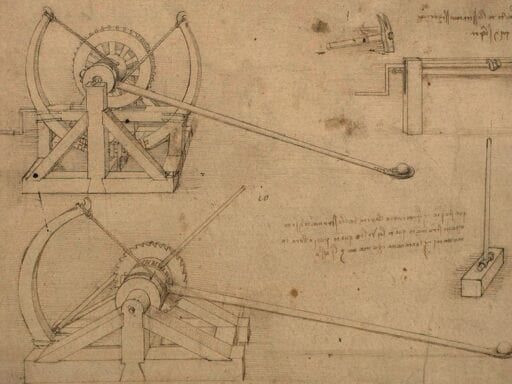In this video for kids, we build our own marshmallow-launching machine.
Welcome to our first-ever week of Vox Video programming for kids!
It’s time to make a catapult.
We wanted to launch some marshmallows, so we built a miniature machine based on Leonardo da Vinci’s designs. Watch the above video to see how we did it.
Leonardo da Vinci was a famous artist and inventor, and his sketchbooks include a couple of catapult drawings that you can use to make a catapult model. We did just that, and it was a lot of fun.
Catapults have a long history, going back to the ancient world (and appearing all across it, from China to Rome). They were used throughout history to bombard castle walls and enemies with projectiles, and they were adapted in the Middle Ages into agents of biological warfare. There are different types, like a mangonel, a trebuchet, and a ballista, each of which has unique advantages.
Our catapult is inspired by da Vinci’s, and it features some really creative ways to generate and store power. We hope you like it — and maybe you’ll try it yourself!
You can find the model we used here.
We designed these episodes for kids ages 9 to 13, but we hope everyone in our audience enjoys them!
If you’re a parent, an educator, or a kid at heart, please sign up for our newsletter for updates on all of our upcoming kids’ programming at Vox, from podcasts to videos to new shows.
Help keep Vox free for all
Millions turn to Vox each month to understand what’s happening in the news, from the coronavirus crisis to a racial reckoning to what is, quite possibly, the most consequential presidential election of our lifetimes. Our mission has never been more vital than it is in this moment: to empower you through understanding. But our distinctive brand of explanatory journalism takes resources — particularly during a pandemic and an economic downturn. Even when the economy and the news advertising market recovers, your support will be a critical part of sustaining our resource-intensive work, and helping everyone make sense of an increasingly chaotic world. Contribute today from as little as $3.
Author: Phil Edwards
Read More



